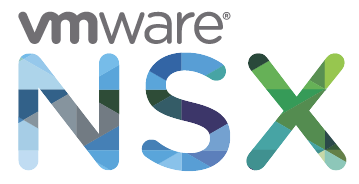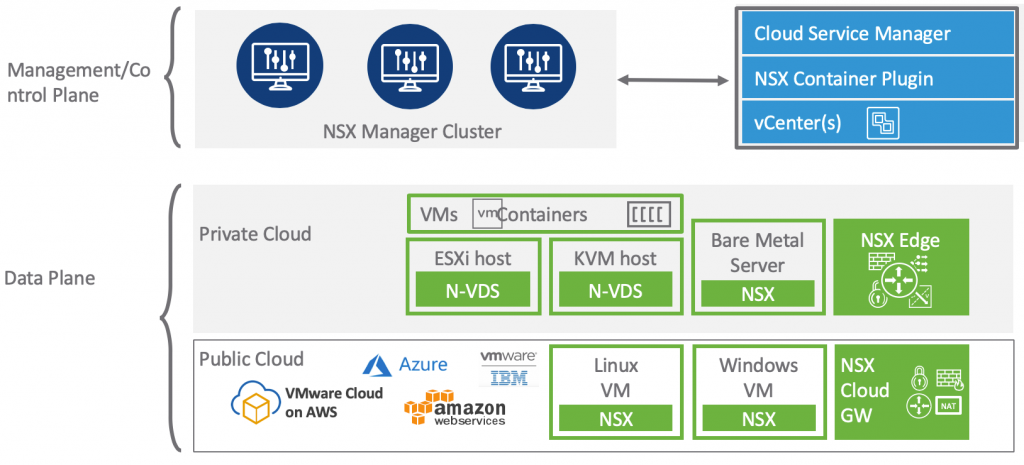
VMware NSX is a network virtualization and security platform and it is part of VMware’s Software Define Datacenter (SDDC) architecture. VMware NSX has emerged as VMware acquisition of a company call Nicira in 2012 which had a solid product on Software Defined Network (SDN). The product comes in four different forms;
- NSX Data Center
- NSX Cloud
- NSX SD-WAN
- NSX Hybrid Connect
NSX Data Center itself comes in two different flavors, NSX-V which mainly designed to work in VMware vSphere environments and NSX-T, formerly known as Multi-Hypervisor, which offers network virtualization and cyber-security features for multi-hypervisor, container-based and multi-cloud environments like AWS or Azure cloud services. Software-Defined networking delivers L2 to L7 network functions in software and allowing virtualization and cloud administrators to provision required services on hypervisor level.
VMware NSX provides the following network virtualization services:
- Logical Switching(Overlay)
- Logical Routing(Inter-VLAN and Edge routing)
- Logical Firewall (Distributed and Edge)
- Network Address Translation(NAT)
- Logical Load Balancer
- Virtual Private Network (Site-to-Site & Remote Access)
- Security Services like Endpoint Security and Spoof Guard
In a series of articles, we are going to explain the concepts behind VMware NSX Datacenter and implement NSX-T. To get an overview about this networking and security solution, first let’s look at main components that form VMware NSX Datacenter infrastructure.
NSX Datacenter Components
To deliver network virtualization and security services, VMware NSX uses the following three layers separated but integrated components.
- Management Plane – NSX manager is acting as management plane of NSX infrastructure. NSX Manager is being deployed as set of Virtual Appliance (VA) in a clustered environment. It is the main point of configuration and injects configurations to hypervisors, vCenter and other components through agents and plugins.
- Control Plane – NSX controller is virtual appliance that is currently integrated to NSX manager to collect and store runtime state of network components like VM’s MAC and IP addresses in MAC and ARP tables. NSX controllers which being deploy as set of virtual machines, form a Controller Cluster to ensure the high availability and workload distribution.
- Data Plane – This plane carries and forwards packets based on tables that are populated by control plane. Data plane includes set of hypervisors and Edge gateways that are being prepared with NSX’s kernel modules(VIBs) and virtual switches.
Following picture from VMware illustrates NSX Datacenter components. As of NSX-T 2.4 control and management plane are integrated into a set of clustered virtual appliances. Data plane of NSX is also divided into On-Prem components and also public cloud components.

In series of articles , NSX-T Deepdive, we are going to guide you how to install, configure and maintain VMware NSX-T infrastructure.
Awesome.